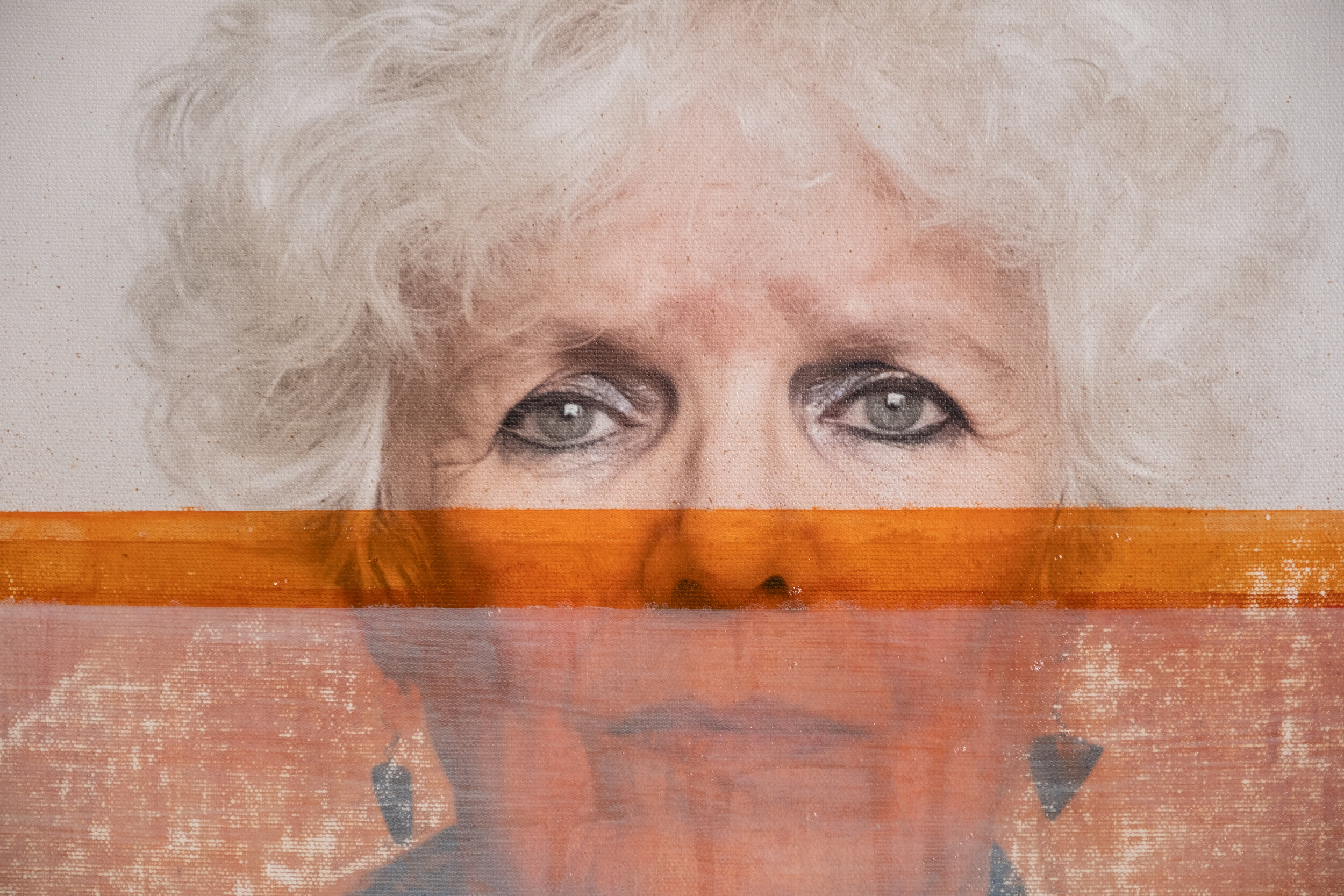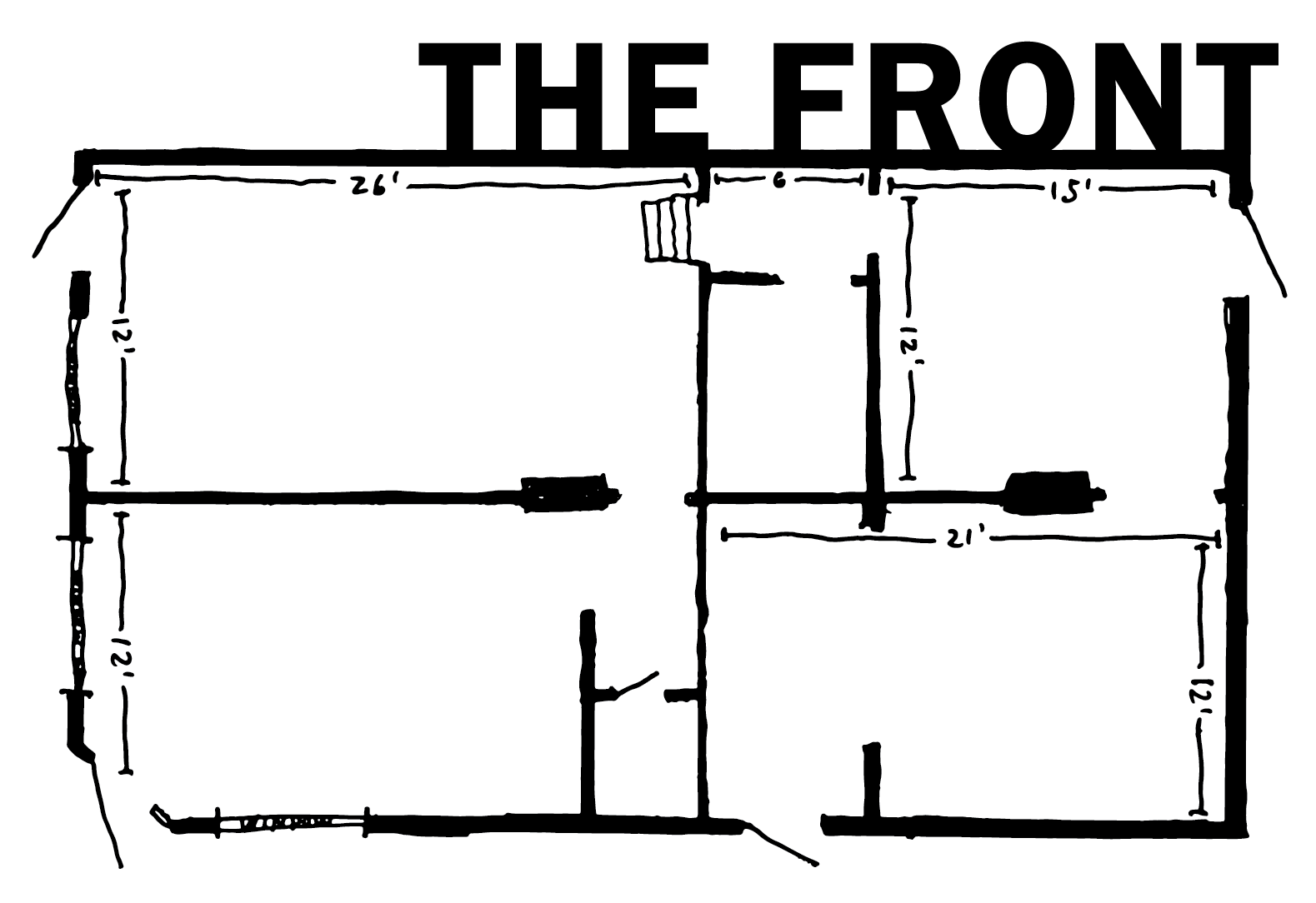May 8 - June 6, 2021
Opening May 8th, 12-9pm, regular hours there-on Saturdays and Sundays 12-5pm.
Room 1
2021 Southern Solidarity Art Fundraiser hosted by the Front
Southern Solidarity is a grassroots, community-based group of volunteers in solidarity with the unhoused in their quest toward liberation. We organize the delivery of food, medical resources and basic needs directly to the unhoused in the downtown area of New Orleans because the government has not filled this need. We are influenced by anti-imperialist principles and mobilized by a black queer woman.
As a group of 30, we organize the daily delivery of food, medical resources, and other basic needs directly to hundreds of unhoused people in the downtown area of New Orleans because the government has failed to meet needs. Southern Solidarity is involved in both direct relief and consciousness raising efforts of members and recipients in our collective struggle for liberation. Some among us are undocumented, formerly incarcerated, unhoused, trans, activists but more importantly, all among us are anti-imperialist.
Show your solidarity by donating to help get more supplies to distribute or volunteering for food prep and delivery.
A COMMUNITY SUPPORTS EACH OTHER NO MATTER WHAT.
@southern_solidarity
southernsolidarity.org
Room 2
Watching Palm Trees Swirl A Sickening Pattern Past The Glass
Curated by Rosalie Smith
Howie Alison
Lee Deigaard
Malcolm Peacock
Keysha Rivera
Rosalie Smith
Bruce Q Williams
Rooms 3 & 4














Sara Madandar
Let Us Believe In...
Let us Believe In… is a collection of life-size portraits depicting a strong, diverse group of women. Starting with photographic prints on canvas, I paint, collage, write, spray, and sew onto their portraits. Much of my work has deployed the aesthetics of clothing and bodies to portray my own experiences as an Iranian woman migrating to the United States. In this series, I tell the stories of the women behind each portrait, letting their own narratives guide the techniques and materials used in each painting.
While they stand in separate portraits, the women of Let us Believe In… are not alone: they are connected through a social geography. All have lived in or are from New Orleans. This spatial connection is represented by a common thread woven through the paintings: the use of plaid patterns, which recall the latitude and longitude lines on a map. In each portrait, you will find a connection between the woman, the place, and the artist.
Take for example Umbilical Roots a portrait of the environmental artist Hanna Chalew. Over her pregnant body, I painted an oak tree signifying the metaphorical celebration of life in her art, which often features living plants, but also the literal life growing within her. I also adopted a technique from her own artistic practice, using handmade recycled paper. In doing so, I also connect my own experience to hers: the paper was made by recycling copies of newspapers reporting on Trump’s “Muslim ban,” a time of painful separation from my family. In making the paper, I blended both of our artistic techniques by adding strands of my own hair into the material, much like I have used human hair in earlier paintings.
In the portrait of Forough who, like myself is an Iranian woman living in New Orleans, I highlight some shared cultural experiences: the Persian passion for poetry, but also the Islamic veiling of women’s bodies. Forough is proud of the fact she was named after Forough Farrokhzad—a prominent Iranian feminist poet. Her poetry, which deeply influenced me as a teenager, was banned for a decade following the Islamic revolution. In this portrait, I pay homage to the poet by transcribing the entirety of her last book, by hand, directly on the canvas. The act of slowly writing it by hand, rather than quickly printing it, is meant as an act of defiance against the censorship of the Islamic regime.
While most women in these portraits wear plaid, a pattern often associated with masculinity, Forough does not. Instead, her lace bra evokes the seductiveness of Farrokhzad’s poetry. Her poems were controversial, deemed improper because they reflect on Farokhzad’s own experiences of intimacy and love. Her poetry highlighted the cultural conflicts around women’s role as a subject and object of love. Yet Forough’s face is still veiled, covered like most of the women in this series: an ever-present reference to the control imposed over women’s bodies. That idea is reinforced by the measurement line seen in all of the portraits. The scale bar is ubiquitous in my art, as if my signature, but also a subtle yet nagging reminder of how women are judged by the proportions of their bodies. These women, however, cannot be reduced to bodily proportions. The length of the ruler in each portrait is actually the life-size measurement of their heads, pointing instead to the value of their intellect.
In telling each woman’s story through their portraits, I also wanted them to bring something of their own to the paintings, choosing an article of clothing, for example—a sort of symbolic collaboration. This is especially salient in Floodlines the portrait of artist Carol Leake, a native New Orleanian. For her portrait, she chose to wear the clothes she had on while evacuating ahead of hurricane Katrina. Her choice inspired the painting, which evokes the iconic images of receding floodlines seen on the walls of homes flooded by the storm. The high watermark almost covers her, indicating the danger she escaped—but the floodlines slowly recede down as the city dries, looking ahead, with hope, towards recovery. There is one thing the water does not cover: the Black Lives Matter pin Carol wore on her jacket. Not even a flood can wash away her earnest commitment as an ally to all people of color.
The hope brought on by the receding floodlines is another common thread that connects me to all the women portrayed here. The title of this series looks back to an earlier collection of mine, Let Us Believe in the Beginning of the Cold Season—in fact, it is the title of Forough Farrokhzad’s last book. As I painted these portraits, we all faced a tragic cold season ahead. The coming winter is bringing on the worst moments of the global pandemic that has kept us apart from the ones we love. By asking each woman to bring something of their own into their portraits, I wanted to overcome the distance the pandemic has wedged between us. By coming together in creating these paintings, we deconstructed the idea of social distancing. We are not socially distant—we are merely physically distant. As you look at the portraits of these strong women, this is what I ask of you: let us, together, believe in the end of this cold, dark season...
Sara Madandar is an Iranian multi-disciplinary artist based in New Orleans. She received her MFA from the University of Texas at Austin and her BA in painting from the Azad University of Art and Architecture in Tehran. Through a range of media such as painting, video, installation, and performance—Madandar explores migration and the human experience of living in between cultures. Her work uses the aesthetics of language, clothing, and bodies to study the complexities of cross-cultural experiences from a unique perspective. In 2021, Madandar will be in residence at the Joan Mitchell Center in New Orleans. Some of her accolades include an award from the Texas Visual Artists Association (TVAA) and an award from the Southeastern College Art Conference (SECAC) for an exhibition curated by Jessica Beck of the Andy Warhol museum. Sara’s work has been featured at Elga Wimmer PCC, New Orleans Museum of Art, Austin City Hall, New Orleans Contemporary Art Center, Elisabeth Ney Museum, and many others.
PURCHASE A SIGNED CATALOGUE BY THE ARTIST
Edition limited to 50 signed copies.
$15*includes fees and shipping within the US.









